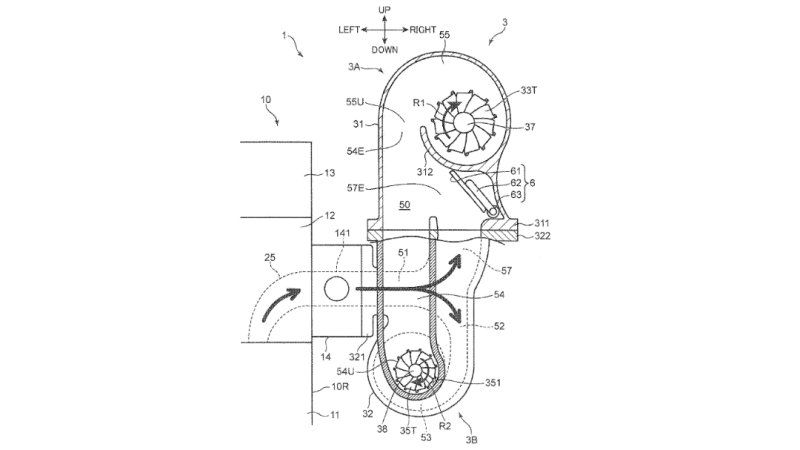In the search for increasingly efficient internal combustion, the zoom-zoom brand is once again turning to the tried-and-true turbocharger to up power levels without killing mpg. This time, though, it’s returning to sequential turbos, a technology it first used with the FD-generation RX-7.
Continue reading for the full story.
The Full Story
Introduced in the early ‘90s, the third-generation Mazda RX-7 (also known as the “FD”) came equipped with a turbocharged rotary engine classified as the 13B-REW. This triangular gas-drinker made its name as the first-ever mass-produced sequential twin-turbocharger system from Japan and helped the RX-7 produce as much as 276 horsepower by the time the model got the axe in 2002.
The sequential turbo system helped cut down on the infamous turbo lag associated with high-performance applications by first employing a smaller turbo that spooled up quickly at low rpm, offering good low-end power and torque thanks to 10 psi of boost. At 4,000 rpm, a second, larger turbo was activated, thus creating more top-end output.
In theory, it was a brilliant solution to the problem of turbocharging. However, the system also added a huge degree of complexity to the powertrain, which didn’t do too many favors for the mechanical failure-prone RX-7. There was also a problem with “boost dip” as the turbos switched between the smaller snail and larger snail, resulting in some hairy handling when driven at the limit. As a result, some owners decided to take the matter into their own hands and tweak the turbos to a simplified parallel system.
Now, however, Mazda is revisiting the tech, as evidenced by a new patent for a fresh sequential turbo system. The principle appears to be more or less the same as the older system, but this time around, the new system looks like it’s fairly more compact than before thanks to a shared exhaust outlet and simplified exhaust manifold. The smaller dimensions and reduced number of parts will also likely reduce overall weight, which is well acknowledged as one of the biggest enemies of performance, both in terms of speed and fuel efficiency. The quicker spool will also help with throttle response, while still providing high peak output.
And that’s all great new for lovers of quick Mazdas. The automaker just slapped a turbo on the new Mazda6, so we’re excited to see what happens next. Truth be told, all we really want is a new RX sports car – something like the RX Vision with a sequential turbo rotor would be just dandy.
References
Mazda RX-7
Read our full review on the 2001 Mazda RX-7 (FD).
Read our full review on the 2016 Mazda RX Vision Concept.
Read our full review on the 2018 Mazda6.

